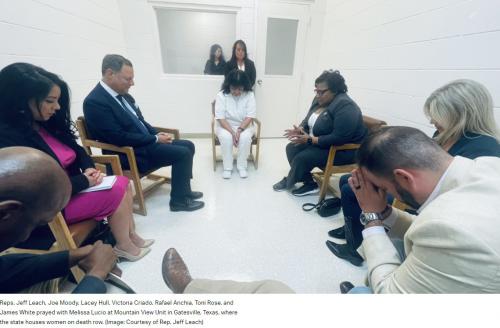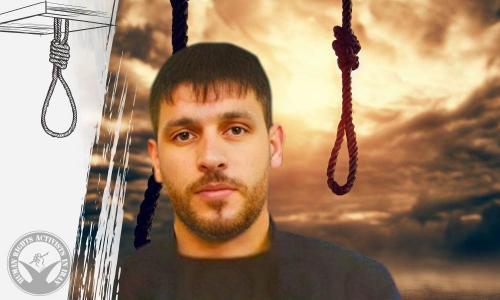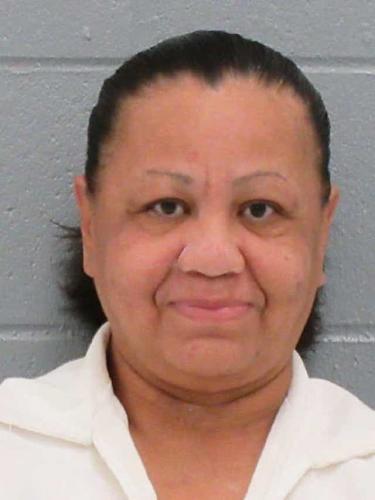02 March 2021 :
FEBRUARY 27, 2021
No End In Sight: America’s Enduring Reliance on Life Imprisonment.
In the United States, more than 200,000 people are serving life sentences.
According to the "NO END IN SIGHT" study by the Sentencing Project, published on February 17, 2021, as of December 30, 2020, there were 203,865 life prisoners in the US. The term "lifers" includes 3 categories: those who will never go out on parole (LWOP, Life With Out Parole), those who could take it (LWP, Life With Parole. asking for parole varies from 15 to 40 years, on average it is 25 years), and those "Virtual", people formally not sentenced to life imprisonment, but to such high sentences, and with the possibility of parole "not earlier than 50 years" to be equivalent to life imprisonment. The Sentencing Project report, signed by Ashley Nellis, counts 55,945 “LWOP” lifers, 105,567 “LWP” lifers, and 42,353 “Virtual” lifers.
The same Sentencing Project study 4 years ago (see NtC 06/05/2017 and 29/01/2018), with data updated to 31 December 2016, gave 3000 fewer LWOP sentences, but 2500 more LWP, and 2700 more "virtual" ones.
All on a prison population (2020) of 1,400,000 people between state and federal prisons. As is well known, in the United States there is also another level of detention, the "local" or "county" one, which on the whole hosts on average between 700,000 and 750,000 people, where, however, the accused are only awaiting trial, or serve minor sentences. Although data on jails are lacking in this study, lifers should not be found in this circuit.
Life in prison without parole exists in all states except Alaska. The main uses are California, Florida, Louisiana, Michigan and Pennsylvania. Half of the national population of people serving LWOP reside in these five states. The federal government holds another 3,536 people in LWOP. Compared to the first life sentence census carried out by the Sentencing Project in 2003, life sentences without parole have increased by 66%.
On the other hand, considering the 3 types of life imprisonment as a whole, the main uses are: California (40,000 cases), Texas (18,460), Florida (15,000), Georgia (10,000), New York, Ohio, Pennsylvania (over 8,000 cases), the Federal System (6,250) and Louisiana (6,000).
Of the "normal" life prisoners, 3,972 were convicted not of murder but of drug offenses. 38% of these are in the Federal System.
Life sentences are served disproportionately by African Americans, Hispanics, and other people of color. Nationally, two-thirds of people serving life sentences are black people: 46% black, and 16% Hispanic. Of the people serving the most extreme life sentence, LWOP, 55% are black. 3% of life prisoners are women.
At least 8,600 people are serving normal or "virtual" life sentences for crimes committed as minors.
The study also points to some proposals to overcome the excessive use of detention.
Some states are beginning to address overly long prison terms through second-look legislation. In 2018, California passed a law to allow prosecutors to seek sentence modifications from judges if sentences are believed to be excessive. In 2020, the Council of the District of Columbia passed legislation that provides people who were under 25 at the time of their offense and sentenced to a long term, the chance to petition the court for resentencing and early release after 15 years. At the federal level, Senator Cory Booker of New Jersey introduced the Second Look Act in 2019 which would allow a federally incarcerated person to petition the court for a sentence modification after 10 years.
These are important first steps. More must be done.
Recommendations
Abolish Life Without Parole
Sentences of life without the possibility of parole (LWOP) are virtually unheard of in the rest of the world. They are considered antithetical to personal transformation, the primary goal of many other corrections systems. Even more, they violate fundamental principles of human dignity. Instead of serving the interests of justice, LWOP unnecessarily burdens systems with the heavy cost of housing, feeding, and providing medical care for the more than 55,000 people. This disproportionately elderly population must live in institutions not well designed to care for them.
The elimination of LWOP will recalibrate all sentences underneath it. Public perceptions of incarceration minimize the negative impact of a 5- or 10-year sentence on an individual when compared to the extremes of a life sentence. Creation of a more fair and just system depends on ending all extreme penalties.
Limit All Life Sentences to 20 Years Except in Rare Circumstances
Accelerate and Expand Release Opportunities
America suffers from a broken parole system, or in some jurisdictions, no parole system at all. In jurisdictions with parole, the review process is mired in political jockeying and often manipulates victim experiences to secure a parole denial. A just parole system would operate independently from the politics of the executive branch both in the ultimate decision to release an individual, as well as the composition of the parole board. The board should be composed of professionals with expertise in social work, psychology, the law, and corrections. Crime of conviction should not be the determining factor in the decision of the parole board. The focus of the parole board hearing should be on the person’s development while incarcerated, current public safety considerations, and identifying what supports are needed to ensure success after release.
States should also adopt “second look” policies that reconsider the appropriateness of continued incarceration given the passage of time and changed circumstances within the individual. Beginning this review at 10 or 15 years aligns the U.S. with the international community and the American Law Institute, a national nonpartisan body of legal experts. It should not take the corrections system more than 20 years to empower an individual with the skills necessary to live crime-free after release.
Reorient Victim and Community Involvement Toward True Healing
A reorientation of the role of victims requires investing in restorative justice models that heal the harm caused by violence at their root, creating a system that is “survivor-centered, accountability-based, safety driven, and racially equitable.” Expert work is underway by groups including Common Justice as well as the National Black Women’s Justice Institute. Both esteemed organizations anchor their work in the belief that we are all safer when we uplift victims, hold everyone accountable for their actions, and do so with empathy and compassion.
The involvement of crime survivors in the process of justice through healing will help to undermine the misguided assumption that victims have been well served by mass incarceration.
Similarly, rather than commit scarce public resources toward perpetual incarceration, funds could be invested in positive community development approaches that improve access to housing, jobs, education and health care.
Since we already know where most violence and other crimes take place, we can mitigate crime-risk by immersing highly disadvantaged communities with early intervention and prevention resources. Considerably larger investments in community strengthening, such as universal preschool education, effective parenting initiatives, victim restitution, and treatment for substance use and mental health disorders will no doubt provide more justice in the end than pointlessly long prison terms. These resources make communities more secure by building systems that prevent the economic and social dislocation that greatly contributes to violence and other crime. By de-emphasizing incarceration and scaling back punishment we can use scarce public resources to support victims and communities to heal and thrive.
This is the path to crime prevention and true public safety.











